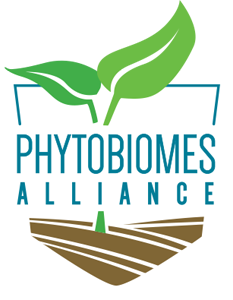
Gwyn Beattie

Role in Phytobiomes Alliance
Board of Directors, Coordinating Committee, Microbiomes Working Group, Regulatory Working Group
Key Projects
Affiliation
Iowa State University
Position
Professor of Plant Pathology & Microbiology
Research Interests
- Microbial ecology
- Microbial genomics
- Molecular plant-microbe interactions
Current Phytobiomes-related Projects
Impact of drought stress on rhizosphere microbial communities
Summary: We are investigating the extent to which plants enrich for beneficial microbial communities in stressful environments. In particular, we are using amplicon-sequencing-based approaches to evaluate the impact of drought stress and plant genotype on microbial root communities through serial plant growth cycles. Our investigations have thus far identified community shifts associated with increased water use efficiency in plants and candidate microbial groups that benefit plants under drought conditions. Long-term applications of this knowledge include breeding plants to maximize plant genetic drivers of beneficial communities.
Mapping soybean microbiomes
Summary: Microbial communities on plants can have profound effects on plant health, including on tolerance to biotic and abiotic stresses. We are exploring factors that influence the development of these communities using soybean as a model system. We are generating spatial and temporal maps of the communities that develop on growing root systems, with interests in the impact of the root metabolome, root system architecture, plant genotype, pathogens, environment, and management practices on the composition and functions of soybean microbiomes. This knowledge of crop-microbiome-environment interactions is critical to designing sustainable crop production strategies.
Microbial exploitation of light as an environmental cue affecting virulence and fitness
Summary: We are investigating the role of light and several photosensory proteins in the biology and virulence of the foliar pathogen Pseudomonas syringae. Using molecular genetics, lab and field studies, and RNAseq-based transcriptomics, we have found evidence that light is a major signal for this pathogen, affecting the expression of over a third of its genes, and that the pathogen integrates its responses to light of different wavelengths and to light and co-occurring environmental signals. Our investigations thus far are contributing to an emerging model in which far-red light, in particular, is a widespread and potent signal impacting the behavior of plant-colonizing microbes, and that foliar pathogens use light to help evade light-driven plant defenses. Applications of this knowledge include strategies to better manage pathogens and to enhance the survival or colonization of beneficial agricultural microbes through manipulation of light signals, such as on seeds
